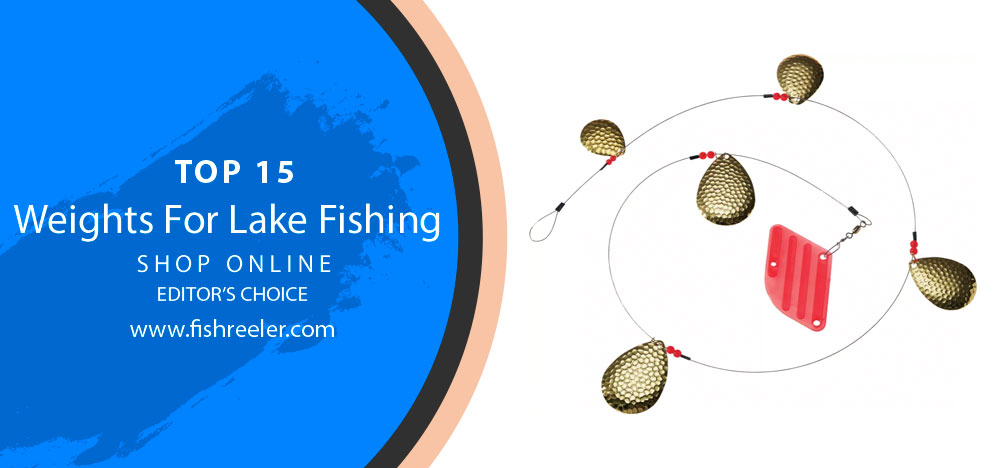
Picture yourself sitting by a serene lake, surrounded by nature’s beauty, and patiently waiting for the fish to bite. You’ve got your fishing rod, bait, and your favorite lure, but have you given any thought to the importance of using the right weights for lake fishing?
The Ultimate Guide to Choosing the Right Weights for Lake Fishing
Fishing weights are an essential component of any angler’s tackle box, and using the right weight can make a significant difference in your success on the water. Choosing the right weight for lake fishing can be a bit tricky, but it’s a crucial part of the fishing experience. A weight is designed to sink your bait and hook to the desired depth, and different weights work best in different situations.
Factors such as water depth, current, and the type of bait you’re using all play a role in determining which weight will be most effective. In this blog post, we’ll explore everything you need to know about choosing the right weights for lake fishing and share some tips and tricks to help you catch more fish on your next trip.
Get Hooked on Lake Fishing: The Importance of Using the Right Weights
➽Here are some basic tags for weights that are commonly used for lake fishing:
- Split Shot – Small, round weights that can be easily attached to the fishing line. They are commonly used for finesse fishing and to adjust the depth of the bait.
- Egg Sinkers – Oval-shaped weights that can slide freely on the fishing line. They are commonly used for bottom fishing and to keep the bait near the lake bed.
- Bullet Weights – Sleek, cone-shaped weights that are aerodynamic and can cast further distances. They are commonly used for targeting larger fish species.
- Bank Sinkers – Flat, disc-shaped weights that can stay put on the lake bed. They are commonly used for surf fishing and to keep the bait in place in strong currents.
- Tungsten Weights – Dense, heavyweights that are smaller in size than lead weights. They are commonly used for finesse fishing and to feel for subtle bites.
- Sputnik Sinkers: Sputnik sinkers are a specialized type of sinker that are designed for surf fishing. They have four legs that extend out from the main body, which helps anchor the sinker in place on the sandy ocean floor.
Weight Matters: Choosing the Right Sinker for Your Fishing Expedition
➽Here are some factors to consider when choosing the right sinker for your fishing expedition in lakes:
- Water Depth: The depth of the water you’re fishing in will play a significant role in determining the type of sinker you should use. If you’re fishing in shallow water, a lighter sinker may be sufficient, while deeper water may require a heavier sinker to reach the desired depth.
- Currents: If you’re fishing in an area with strong currents, a heavier sinker may be necessary to keep your bait or lure in place. A lighter sinker may be suitable for areas with minimal currents.
- Bottom Structure: The structure of the lake’s bottom can also impact the type of sinker you should use. If the lake has a rocky or weedy bottom, a sinker with a snag-resistant design may be necessary to prevent the sinker from getting caught in the vegetation or rocks.
- Wind and Weather Conditions: Windy conditions can make it challenging to keep your bait or lure in place, so a heavier sinker may be necessary to keep it from being blown around by the wind. Similarly, if there are waves or choppy water, a heavier sinker may be required to keep your bait or lure in the desired location.
- Fish Species: The species of fish you’re targeting will also impact the type of sinker you should use. For example, if you’re targeting bottom-feeding fish like catfish or carp, a heavier sinker may be necessary to keep your bait on the bottom where the fish are feeding.
Maximize Your Catch: Tips and Tricks for Using Weights in Lake Fishing
➽Here are some tips and tricks for using weights in lake fishing:
- Match the weight to the fishing conditions: The weight you use will depend on the water conditions and the type of fish you are targeting. If the water is calm and the fish are close to the surface, you may only need a small split shot weight. But if the water is deep and choppy, you may need a heavier weight like a bullet weight to get your bait down to the fish.
- Use a variety of weights: It’s a good idea to have a variety of weights in your tackle box so that you can adjust your setup based on the fishing conditions. Experiment with different weights until you find the one that works best for the situation.
- Consider the type of bait you’re using: Different types of bait will require different weights. For example, if you’re using live bait, you may want to use a weight that is heavy enough to keep the bait near the bottom but not so heavy that it will drag the bait along the bottom.
- Don’t use too much weight: Using too much weight can make your bait appear unnatural and scare away fish. It can also make it difficult to feel for bites. Start with a small weight and work your way up until you find the right balance.
- Be patient: Fishing with weights can be a bit of trial and error, so don’t get frustrated if you’re not getting bites right away. Keep experimenting with different weights and techniques until you find what works best for you.
- Pay attention to your line: When using weights, it’s important to pay attention to your line. You want to make sure that the weight is not dragging your line down and causing it to sink, which can make it difficult to detect bites. Make sure your line is tight but not too tight, and keep an eye out for any movements or changes in tension.
- Stay safe: When using weights, be sure to handle them with care and avoid using them in areas where there are swimmers or other watercraft. Always be aware of your surroundings and take necessary safety precautions.
Sinking into the Depths: Exploring the Differences Between Lake and Sea Sinkers
➽The main differences between sinkers for lake fishing and sea sinkers are:
- Weight: Sea sinkers are generally heavier than lake sinkers. This is because the currents and tides in the sea are much stronger than in a lake, and a heavier sinker is needed to keep the bait or lure in place.
- Shape: Sea sinkers are typically more streamlined and have a more aerodynamic shape than lake sinkers. This helps them cut through the water more efficiently and reduces drag.
- Material: Sea sinkers are often made from denser materials, such as lead or tungsten, to help them sink quickly and maintain their position in strong currents. Lake sinkers, on the other hand, may be made from lighter materials such as tin or brass.
- Rigging: Sea sinkers are often rigged with multiple hooks or lures, while lake sinkers typically only have one hook. This is because sea fishing often involves targeting multiple species of fish at different depths, while lake fishing is usually focused on a specific type of fish.
- Size: Sea sinkers are generally larger than lake sinkers. This is because larger fish are typically found in the sea, and a larger sinker is needed to handle the weight and resistance of these fish. Lake sinkers can be smaller because the fish are generally smaller and the currents are not as strong.
Streamlined and Strong: The Importance of Shape in Lake Sinkers
The shape of a sinker plays a crucial role in its effectiveness during fishing expeditions. The right shape can help the sinker cut through the water with minimal resistance, making it easier to maintain control over your line and hook.
One of the most common shapes for lake sinkers is a torpedo shape, which is long and slender with pointed ends. This shape allows the sinker to move through the water smoothly and efficiently, reducing drag and improving its overall performance.
Another popular shape for sinkers is the ball shape, which is round and has a flat bottom. This shape helps the sinker stay in place on the ocean floor, even in rough currents or windy conditions. The flat bottom also provides a stable base for your bait or lure, keeping it in position for longer periods of time.
In addition to torpedo and ball shapes, lake sinkers can also come in a variety of other shapes, such as cone, egg, and pyramid shapes. Each of these shapes is designed to provide specific benefits for different types of fishing conditions and techniques.
Material Makes a Difference: Understanding the Varieties of Sinkers
The materials used to make lake fishing sinkers can vary depending on the type of sinker and the manufacturer.
➽Here are some of the most common materials used:
- Lead: Lead is a popular material for making fishing sinkers because it is dense and heavy, which allows the sinker to quickly sink to the desired depth. However, lead sinkers can be toxic to the environment and have been banned in some areas due to their potential impact on wildlife.
- Tungsten: Tungsten is an alternative to lead that is becoming increasingly popular for making fishing sinkers. It is dense and heavy like lead, but it is also non-toxic, making it a safer choice for the environment.
- Steel: Steel sinkers are another option that is durable and corrosion-resistant. They are often coated with a protective layer to prevent rust and corrosion.
- Brass: Brass sinkers are a popular choice for finesse fishing because they are lightweight and sensitive, which allows anglers to feel even the slightest bites from fish.
- Bismuth: Bismuth is another alternative to lead that is non-toxic and eco-friendly. It is not as dense as lead or tungsten, but it is still heavy enough to sink to the desired depth.
When choosing a sinker for lake fishing, it’s important to consider the material and its impact on the environment. Some materials, like lead, can be harmful to wildlife and should be avoided if possible. Alternatives like tungsten, steel, brass, and bismuth can provide similar functionality without negative environmental impacts.
Size Matters: How the Fish You’re Targeting Affects Sinker Choice
The fish you’re targeting will play a significant role in determining the type of sinker you should use.
➽Here are some key factors to consider when selecting a sinker based on the fish you’re targeting:
- Species of Fish: Different species of fish have different feeding habits and behaviors, which can impact the type of sinker you should use. For example, bottom-dwelling fish like catfish or carp may require a heavier sinker that can hold your bait on the bottom, while fish like bass or trout may require a lighter sinker that allows your bait or lure to move more naturally in the water.
- Feeding Depth: Understanding the feeding depth of the fish you’re targeting is crucial to selecting the right sinker. Some fish feed near the surface, while others may be found at deeper depths. If you’re targeting fish that feed near the surface, a lighter sinker that allows your bait or lures to float may be the best choice. For fish that feed at deeper depths, a heavier sinker that can reach the bottom may be required.
- Water Conditions: The conditions of the water you’re fishing in can also impact the type of sinker you should use. If the water is calm and still, a lighter sinker may be suitable, but if there are strong currents or waves, a heavier sinker may be needed to keep your bait or lure in place.
- Bait or Lure Type: The type of bait or lure you’re using can also affect the type of sinker you should use. For example, live bait may require a lighter sinker that allows it to move more naturally in the water, while artificial lures may require a heavier sinker that can help them sink to the desired depth.
It’s always a good idea to have a variety of sinkers on hand to allow for flexibility in changing conditions or unexpected challenges.
Rigging for Success: The Unique Setups of Lake Sinkers
Lake sinkers are a specific type of fishing sinker that is designed for use in freshwater lakes. They are typically used when fishing from a boat or other watercraft, and they can be used to help keep your bait or lure at a specific depth. There are several different types of lake sinkers available, each with its own unique setup and use.
➽Here are some of the most common types:
- Bottom Bouncers: Bottom bouncers are a type of lake sinker that is designed to keep your bait or lure just off the bottom of the lake. They consist of a wire or metal arm that is attached to the fishing line and a weight at the end of the arm. The weight bounces along the bottom of the lake as you move your bait or lure, helping to keep it at a specific depth.
- Drift Sock Sinkers: Drift sock sinkers are used when trolling for fish in a lake. They consist of a weight that is attached to a drift sock, which helps to slow down the boat and keep it moving at a consistent speed. This setup is particularly useful when fishing for walleye or other species that are attracted to slower-moving lures.
- Slip Bobber Rigs: Slip bobber rigs are a type of lake sinker that is used when fishing for panfish or other species that are attracted to live bait. They consist of a weighted bobber that slides up and down the fishing line, allowing you to adjust the depth of your bait. This setup is particularly useful when fishing in areas with variable depths, as you can adjust the depth of your bait to match the depth of the fish.
- Carolina Rigs: Carolina rigs are a type of lake sinker that is used when fishing for bass or other larger species. They consist of a sliding sinker that is attached to a swivel, which allows the bait or lure to move more naturally in the water. This setup is particularly useful when fishing in areas with heavy vegetation or cover, as the sliding sinker can help prevent snagging.
Best Weights For Lake Fishing Review
One thing is for sure – using the right weights for lake fishing can make all the difference. With so many weights on the market, it can be overwhelming to figure out which one is right for you. But don’t worry, we’ve got you covered!
In this post, we’ll dive into the world of fishing weights and explore why they’re so important for lake fishing. We’ll share our top tips for selecting the perfect weight and reveal some tricks of the trade that will have you catching fish like a pro in no time. So grab your tackle box and let’s get started!
While there are many different types of weights and lures available on the market, we’ve compiled a list of the best weights for lake fishing. These top-rated weights have been proven to be effective in catching trout, and they’re sure to help you land that big one!
1# Luhr Jensen Dave Davis Lake Trolls
The Luhr Jensen Dave Davis Lake Trolls are a popular trolling accessory used by anglers for fishing in lakes. These lake trolls are designed with a rotating, propeller-like blade that creates a vibration and flash in the water, attracting fish to your bait. The blade is made from high-quality brass, providing durability and resistance to corrosion.
The Dave Davis Lake Trolls come in two sizes, the 11-inch and the 8-inch. The 11-inch version is ideal for larger fish like salmon and trout, while the 8-inch version is perfect for smaller fish like kokanee and bass. Both versions are available in a variety of colors, allowing you to choose the one that best matches the water conditions and the type of fish you are targeting.
These lake trolls feature a swivel chain rigging that allows them to rotate and spin freely, preventing line twists and tangles. The rigging is also adjustable, allowing you to customize the length and position of the blade to suit your fishing needs.
The Luhr Jensen Dave Davis Lake Trolls are easy to use and require no special skills or knowledge. Simply attach them to your line and troll them behind your boat. The rotating blade will create a flash and vibration in the water, attracting fish to your bait.
➽Looking for a great trolling lure that will get fish biting?
Look no further than the Luhr Jensen Dave Davis Lake Trolls. These lures have larger blades that create great flash and movement at any speed, making them irresistible to fish. They’re also easy to pull, so you can keep your lines tangle-free. Whether you’re targeting trout, salmon, or other species, the Luhr Jensen Dave Davis Lake Trolls are sure to give you a successful day out on the water.
2# Anchor Double-Cut Lake and Stream Shot Assortment
Introducing the Anchor Double-Cut Lake and Stream Shot Assortment! These soft lead weights feature opposable cuts that make them easy to open and close without damaging your line. Plus, they won’t hinder fly or line performance, so you can keep on fishing with ease. The assortment contains sizes 1, 4, 6, and 8.
3# Christensons Lake Shore Tackle Lake Troll
Christensons’ Lake Shore Tackle Lake Troll is the perfect tool for the trophy fisherman targeting lunker lake trout and other large game fish. The five massive blades on this troll create an incredible amount of flash and thump, making it easy to draw the attention of your target. With three blades measuring 6″ or more and two blades measuring 4″ or more, this troll is sure to put up a fight. Works best at 1.4–1.9 mph.
4# Double X Tackle Pot of Gold 36” Lake Troll Colorado Rig
Check out the Double X Tackle Pot of Gold 36″ Lake Troll Colorado Rig. This top-of-the-line troll uses easy spin clevis’ to reduce drag without compromising on the enticing vibration that is sure to attract fish from all around. The Colorado blades on this rig produce deep vibration, making it irresistible to fish in the area. Made in the USA with high-quality 302 stainless steel wire, this troll is built to last and withstand heavy use. So don’t miss out – put the Double X Tackle Pot of Gold 36″ Lake Troll Colorado Rig on your line today!
5# Al’s Lake Trolls
To land a monster fish you need Al’s Lake Trolls in your tackle box. These lures feature active willow blades that create a bright flash and entice vicious strikes. Plus, the vibrating action is irresistible to hungry lunkers. So if you’re serious about fishing, don’t go on your next expedition without Al’s Lake Trolls. Made in the USA.
6# Panther Martin High Lake Troll
If you’re looking for an attractor rig that will bring the fish to your lure, the Panther Martin High Lake Troll is just what you need. This 4-blade inline rig creates extreme flash and vibration, thanks to the holographic blades. The matching rudder gives it precise tracking, making it easy to use. You’ll be amazed at how many fish you’ll catch with this rig!
7# Kokabow In-Flight Lake Troll
The Kokabow In-Flight Lake Troll is an extremely lightweight trolling lead that features a colourful rudder and 5 willow leaf blades. The prism tape on the blades helps to reflect light, even on overcast days, making this trolling lead perfect for attracting trout and kokanee. The premier crystals and glass beads add an extra touch of sparkle that is sure to get the attention of any hungry game fish. Made in the USA, this high-quality trolling lead is sure to provide hours of fun and excitement out on the water.
8# Christenson’s Diamond Dodgers
The Christenson’s Diamond Dodgers are a perfect choice! These lures are designed to maximize wobble, and they’re most effective when trolled between 1.4 and 1.9 MPH. Plus, the smaller size puts even more action in the water. So whether you’re targeting walleye, salmon, or other predators, Diamond Dodgers are sure to give you the results you’re after. So don’t wait – get your hands on a few today and see for yourself!
9# Christenson’s Lightning Dodger
The Christenson’s Lightning Dodger is just what you need. This unique, lightly cupped design is easy to run and can be trolled at higher speeds without blowing out. Plus, it’s extra tough to withstand brutal strikes. Perfect for clear water conditions, the Lightning Dodger is sure to give you an edge on the competition.
10# Christenson’s Dakota Dodger
If you want to add some extra pizzazz to your trolling game, then Christenson’s Dakota Dodger is just what you need. With the same graphics on both sides and a deeper cup shape, this flasher creates maximum colour flash and vibration, making it irresistible to fish. Plus, the superior lure action ensures that your trailing lure gets plenty of attention. All in all, the Dakota Dodger is a must-have for any serious troll fisherman.
11# Easy Sinker Removable & Reusable Lead Fishing Weight
The SLIDING fishing weight is an easy-to-use weight that can be quickly and easily added or removed from your line without having to cut your line or tie any knots. This weight is also great for quickly adjusting to any size egg weight on the fly, so you can capitalize on any fishing condition. The SLIDING fishing weight is safer on your equipment because you don’t have to preassemble it on your rig. Simply install it on the spot when you’re ready to fish.
12# Keadic Fishing Weights with Scale Mark on Sinkers
The Keadic Fishing Weights with Scale Mark on Sinkers are perfect for your fishing needs. Made of high-quality and durable lead material, these weights are perfect for use in both freshwater and saltwater environments. With an easy-to-cut design, you can quickly add or remove these weights from your line without having to tie a knot. The wide applicability of these weights makes them perfect for use in most fishing situations. Order your Keadic Fishing Weights today and be prepared for your next fishing trip!
13# THKFISH Fishing Weights
Introducing THKFISH Fishing Weights – the perfect choice for anglers looking for a reliable, easy-to-use drop shot weight. Our fishing weights are designed to provide a smooth retrieval in all bottom environments, and they work great in both rocks and wood without snagging. With their slender, pencil-shaped design, our weights also offer quiet entry when casting. So if you’re looking to make drop-shotting more fun and easy, THKFISH Fishing Weights are the way to go!
14# Water Gremlin Removable Split Shot
The patented Water Gremlin Removable Split Shot process forms very soft lead into precise pieces, resulting in a controlled hinge that can be squeezed onto the line using your fingers. CNC machined for a perfect fit, the package weight of the product is 0.46 pounds.
15# Sinrier Quick Set up Brass Fishing Sinker with Inner Swivel
Looking for a reliable, Quick Set-Up Brass Fishing Sinker With Inner Swivel? Look no further than Sinrier! Our high-quality brass sinkers are perfect for both saltwater and freshwater fishing, and our nickel plating ensures they won’t rust. Plus, our egg-shaped design minimizes resistance when falling into the water and allows for 360° rotation. So why wait? Get your quick set up brass fishing sinker with inner swivel today!
FAQ: Essential Tools for a Successful Lake Fishing Trip
Fishing with weights is a common technique used by anglers when fishing in lakes. There are various types of weights available, including split shot, egg sinkers, bullet weights, bank sinkers, and tungsten weights. Choosing the right weight is crucial to the success of your fishing trip, and factors such as water conditions, the type of fish you are targeting, and the type of bait you are using should all be taken into consideration. By using a variety of weights and adjusting your setup based on the fishing conditions, you can increase your chances of catching fish.
Conclusion
Using weights in lake fishing is a technique that requires patience, skill, and knowledge. By choosing the right weight and adjusting your setup based on the conditions, you can significantly increase your chances of catching fish. Remember to be patient and experiment with different weights until you find the right balance. Always pay attention to your line and stay aware of your surroundings to ensure a safe and successful fishing trip. With the right tools and techniques, fishing with weights can be a rewarding and enjoyable experience.
In this blog post, we’ve looked at some of the best weights for lake fishing and why they are so popular among anglers. We’ve also answered some common questions about using weights while fishing in a lake. If you’re looking to improve your success while fishing in a lake, using the right weights is essential. Choose the weight that is best suited for the conditions of the lake where you are fishing and be sure to adjust depending on weather conditions. With the right equipment, you’ll be landing trout left and right!

I live in Tenerife (Canary Islands) for the last 10+ years and share my daily fishing experiences on my website. Many years of personal experience as a fisherman and the vast experience of my friends allow me to write professionally on any fishing topics (from choosing a flashlight and equipment to deep-sea fishing).
All of my advice is based on practical real-world experience and will be useful to both novice anglers and professionals. Read more about the author.
Affiliate Disclosure: FishReeler.org sometimes gets paid for listings, through sponsors or affiliate programs like Amazon, Ebay, Cabelas, Bass Pro Shop, Shimano, Daiwa, Rapala, Renn, Okuma, KastKing, etс. Clicking a link helps keep FishReeler.org free, at no extra cost to you!
About the author: Each article is verified by the fishing expert Sergio Smirnoff. The articles are written by professional and amateur fishermen with 20+ years of fishing experience.
Note: The views and opinions expressed in this article are those of the authors and do not necessarily reflect the official policy or position of any agency. The articles are for informational purposes only, share your opinions in the comments and join the fishing discussions, let's share our fishing experiences together!


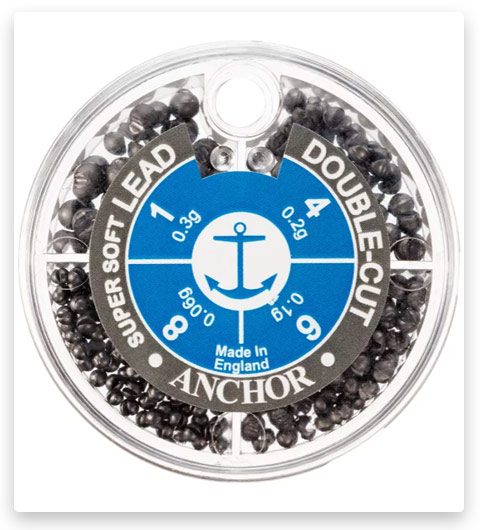
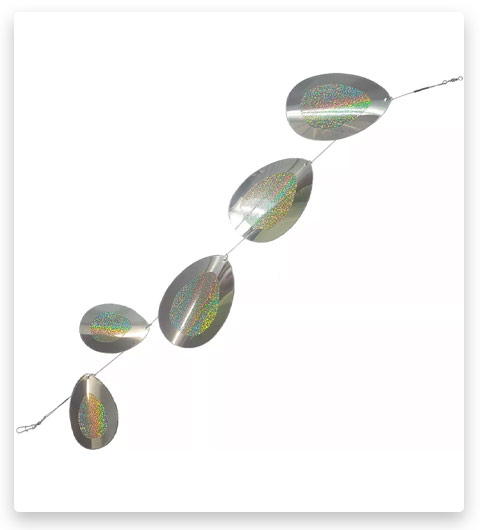
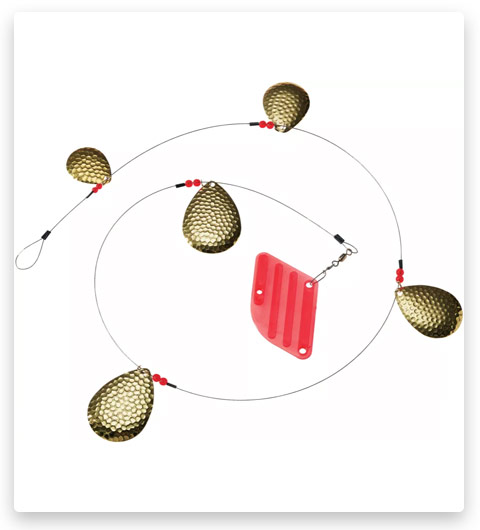
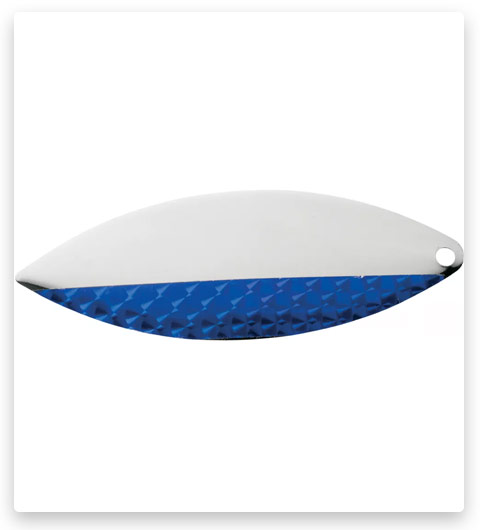
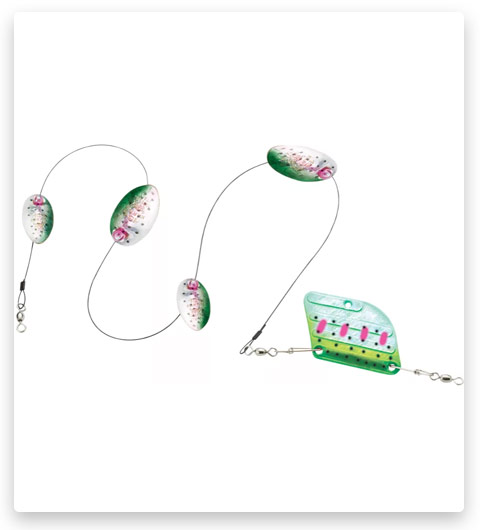
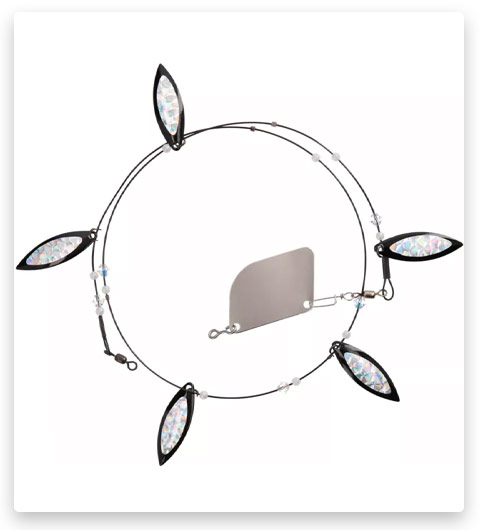
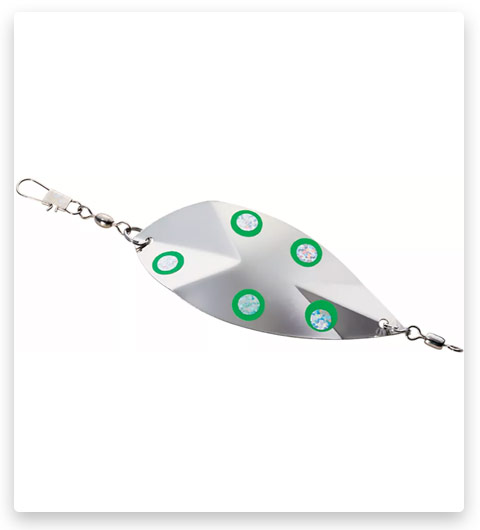
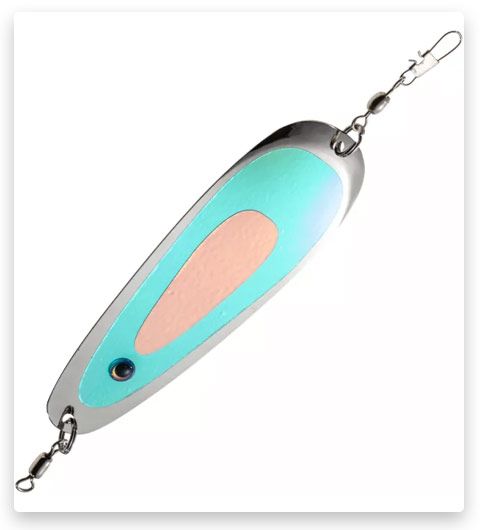
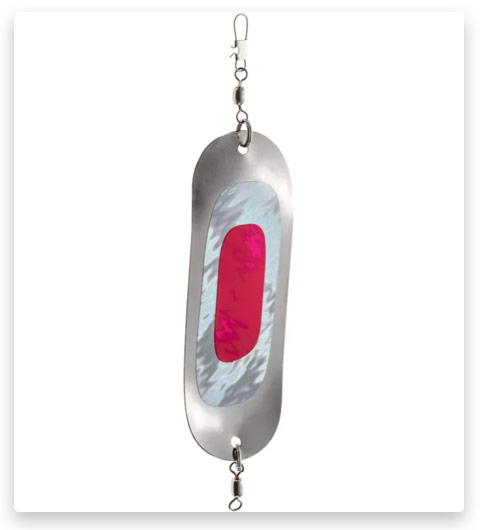

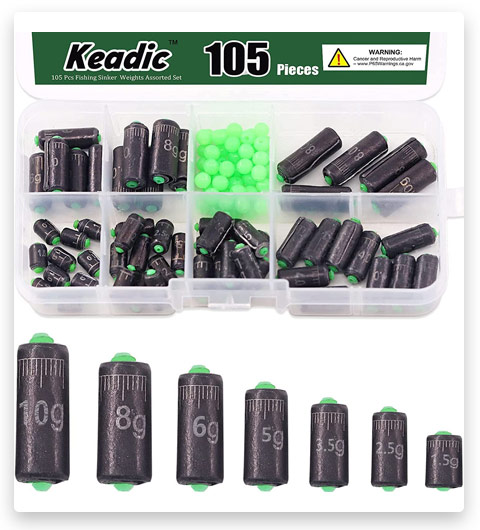


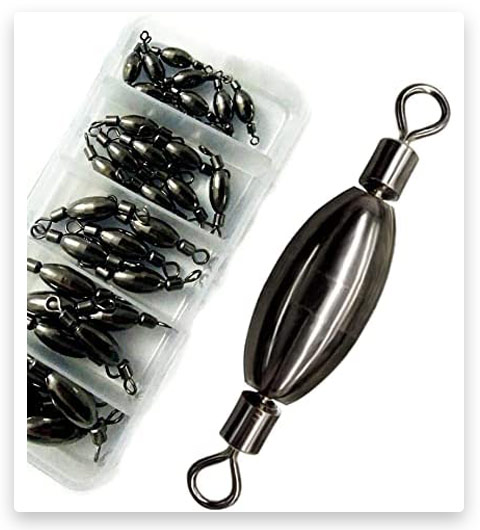
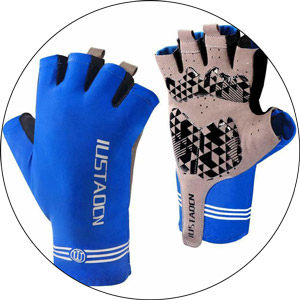
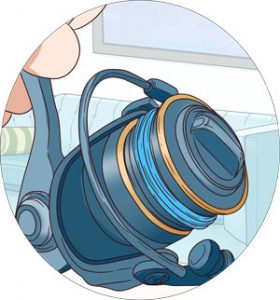
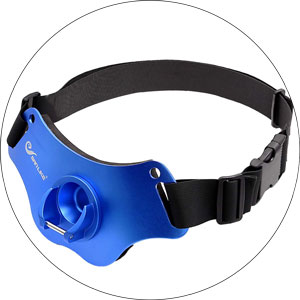
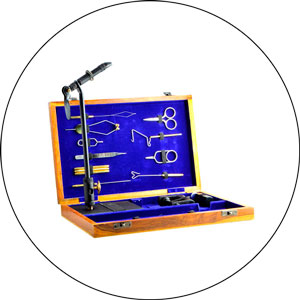
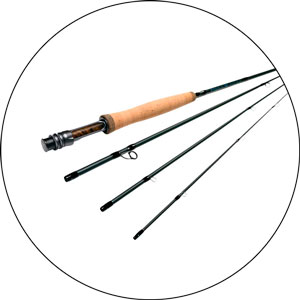
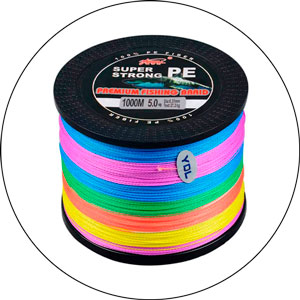
When it comes to fishing, I’ve found that lakes are usually the best spots to go if you’re looking for a relaxing and successful day on the water. In my experience, the current in a river can often carry a bobber and your bait away, making it harder to keep your line in the right spot. That’s why I prefer to fish in lakes, where the water is usually calmer and easier to control.
One of the tricks I use when fishing in moving water is to suspend the bait off the bottom with a bank sinker. This can help keep the bait in the strike zone and prevent it from getting swept away by the current. I’ve found this to be especially effective when targeting catfish in the Hudson River, where the current can be quite strong.
Another technique I like to use for river fishing is a drop shot rig with a heavier weight. This can be a great way to keep your bait close to the bottom, where catfish and other bottom-dwelling fish are likely to be. Of course, the weight you use will depend on the conditions of the river, so be sure to experiment and see what works best for you.
I recently had an interesting experience while fishing at the beach that got me thinking about the power of rip currents. I had set up my gear on the sand and was casting my line out into the water when I noticed that something strange was happening. Every time I cast, the line was being pulled towards the shore, as if there was a strong current pushing against it.
At first, I thought maybe I had just cast in the wrong spot, but after a few more attempts, I realized that something else was going on. That’s when I noticed that there was a small pyramid-shaped structure made of rocks a few ways down the beach. I wondered if this could be causing the unusual current that was pulling my line toward the shore.
I decided to test my theory by moving down the beach and casting my line in a different spot, away from the pyramid. To my surprise, the current was much weaker and I was able to cast out much farther without being pulled back toward the beach.
Looking back, I’m pretty sure that what I experienced was a rip current caused by the pyramid of rocks. Even though it was a small structure, it was enough to disrupt the normal flow of water and create a powerful current that pulled everything toward the shore.
This experience was a good reminder of the power of rip currents and how they can be dangerous for swimmers and fishermen alike. It’s always important to be aware of your surroundings and to take caution when fishing near unfamiliar structures or in areas with strong currents.
When it comes to fishing, one of the things that I’ve learned over the years is that the shape of your weight can make a big difference in how well it holds in the water. Depending on the conditions and the type of fish you’re targeting, you may need to choose a specific type of weight to ensure that your bait stays in place.
In my experience, bank sinkers are not the most reliable option, as they can easily get dragged away by currents. Instead, I’ve found that pyramid-shaped weights are much more effective at holding in place. Even in moderate conditions, a 3oz pyramid weight should be heavy enough to keep your bait where you want it.
However, if you’re fishing in strong currents or rough water, you may need to step up your weight game even further. That’s where grip leads, also known as breakaways, spiders, or sputniks, come in. These specialized weights are designed to hold onto the ocean floor with multiple legs, making them nearly impossible to dislodge. In my experience, they are the most reliable weight option when fishing in challenging conditions.
So, the next time you’re setting up your tackle for a day of fishing, take some time to consider the shape of your weight and how it will perform in the water. Choosing the right weight can make a big difference in your success and your overall fishing experience.
When it comes to choosing bullet weights for my fishing tackle, I have to admit that I’m not too picky. As long as the weight does its job and keeps my bait in the water where it needs to be, I’m happy.
In fact, I usually buy packs of bullet weights that come with multiple types of weights, so I have options depending on the conditions and the type of fish I’m targeting. I’m not too concerned about the coatings or the appearance of the weights – all I care about is whether they work.
That being said, I do recognize that some anglers may have different preferences when it comes to their bullet weights. If you’re targeting a specific type of fish or fishing in certain conditions, you may want to choose a weight with a certain coating or design to optimize your chances of success. However, for me, I’m happy to stick with what works and keep it simple.
I have heard concerns from some anglers about the use of lead weights in fishing, particularly because of the potential harm it can cause to fish and waterfowl. In some places, there are even regulations that restrict or prohibit the use of lead weights for this reason.
However, it’s important to note that not all fishing areas have such restrictions in place, and some anglers still choose to use lead weights because of their effectiveness in certain fishing situations. That being said, I personally try to minimize my use of lead weights and opt for alternatives when possible.
For example, there are now non-toxic options available for anglers who want to avoid lead. Some of these include tungsten, tin, or bismuth weights, which are designed to have similar properties to lead without harmful environmental impacts. I think it’s important for anglers to be mindful of the impact of their fishing practices on the environment and make choices that prioritize sustainability and conservation.